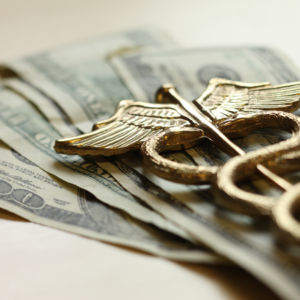For American healthcare consumers, the New Year will be very happy, indeed.
Beginning on January 1st, American hospitals must publish their real prices, including their discounted cash and secret negotiated rates. With this pricing information, patients and employers will finally know how much they owe before care is provided.
Clear prices will empower them to shop for the best quality care at the lowest possible prices, putting downward pressure on healthcare costs. No longer will consumers be blindsided by ruinous surprise medical bills for the roughly 90 percent of healthcare spending that is not for emergencies.
Combined with health insurers starting to post their patient-specific cost-sharing information for services and prescription drugs in 2022, real hospital prices will create a functional and competitive healthcare marketplace. This price transparency revolution will help all healthcare consumers, including those with health insurance who still face bankruptcy from the current healthcare system where prices are hidden.
With more than one-sixth of Americans holding outstanding medical debt and roughly half of American families avoiding care each year for fear of crippling costs, these patients are our friends, neighbors, and colleagues. They are the victims of the country’s broken healthcare system.
Consider Judy Liming from Ohio who passed away last summer from complications of breast cancer. She was mistreated, mischarged, bankrupted, and broken by her care. Her doctors mistakenly over-infused her with chemotherapy, damaging her lungs and contributing to her death.
She received countless overwhelming and costly medical bills over the years ranging from several hundred to several thousand dollars for treatment-related procedures, such as anesthesia, that she thought were covered by health insurance. Like roughly 40 percent of cancer patients, Judy filed for bankruptcy due to medical bills. I witnessed the physical toll that her financial situation took.
Or take Martin Kearns, a handyman from Massachusetts. Martin pays nearly $2,000 a month for his health insurance, not including copays or deductibles. Yet after a routine colonoscopy, Martin’s healthcare bills piled up to the extent he had to choose between paying for them or his son’s school. He notes how patients like him get the runaround from hospitals and insurers when trying to discover prices for procedures, accurately calling healthcare pricing “a shell game.”
Claudia from New York chose to receive spinal surgery from a Manhattan doctor who supposedly took her insurance. After the surgery, she was blindsided by a $101,000 bill; the doctor said he no longer accepted her coverage.
Some patients, including Florida teacher Carbery Campbell, have received bills for around $6,500 for their coronavirus-related testing even though they can be widely attained for just a couple hundred dollars — or provided free from the government.
Then there are the tens of thousands of patients who are sued each year by hospitals for unpaid bills, many of which would never exist if prices were clear before care.
Wanda from Virginia is one of more than 20,000 patients in over five years who have been sued by Mary Washington Hospital. Wanda almost passed out in the middle of an extended nursing shift and was convinced by her colleagues to go to the emergency room. She assured the doctors that, as a single working mother, she was just stressed out and needed rest. Yet the hospital conducted a series of routine tests and charged her $8,000 for a two-day stay. It garnished 25 percent of her paycheck.
Jimmy Joe, another victim of Mary Washington, was misdiagnosed, charged $5,000 for routine procedures, and sued by the hospital. His mother-in-law, a retired pediatric nurse at Mary Washington, even had $13,000 lien placed on her home by her former employer for her outstanding medical bills. The lien makes it impossible to sell her house to have funds to pay off her medical bills.
Healthcare bills financially ruin many ordinary Americans like Judy, Martin, Claudia, Wanda and Jimmy Joe because prices are hidden, allowing hospitals to charge essentially whatever they want. “They could really put any number on there,” notes Jimmy Joe, and “get over on people.”
By the time patients get their fragmented bills in the mail, they have no recourse to seek out less-expensive alternatives. Nowhere else in the economy does this ridiculous pricing dynamic exist. Because nowhere else is price information so hidden.
Real hospital prices coming in a couple of weeks will change this pricing game by putting patients in the driver’s seat of their health and wealth. At the end of a long and difficult year, this price transparency revolution is something that all Americans can celebrate on New Years and enjoy for generations to come.

